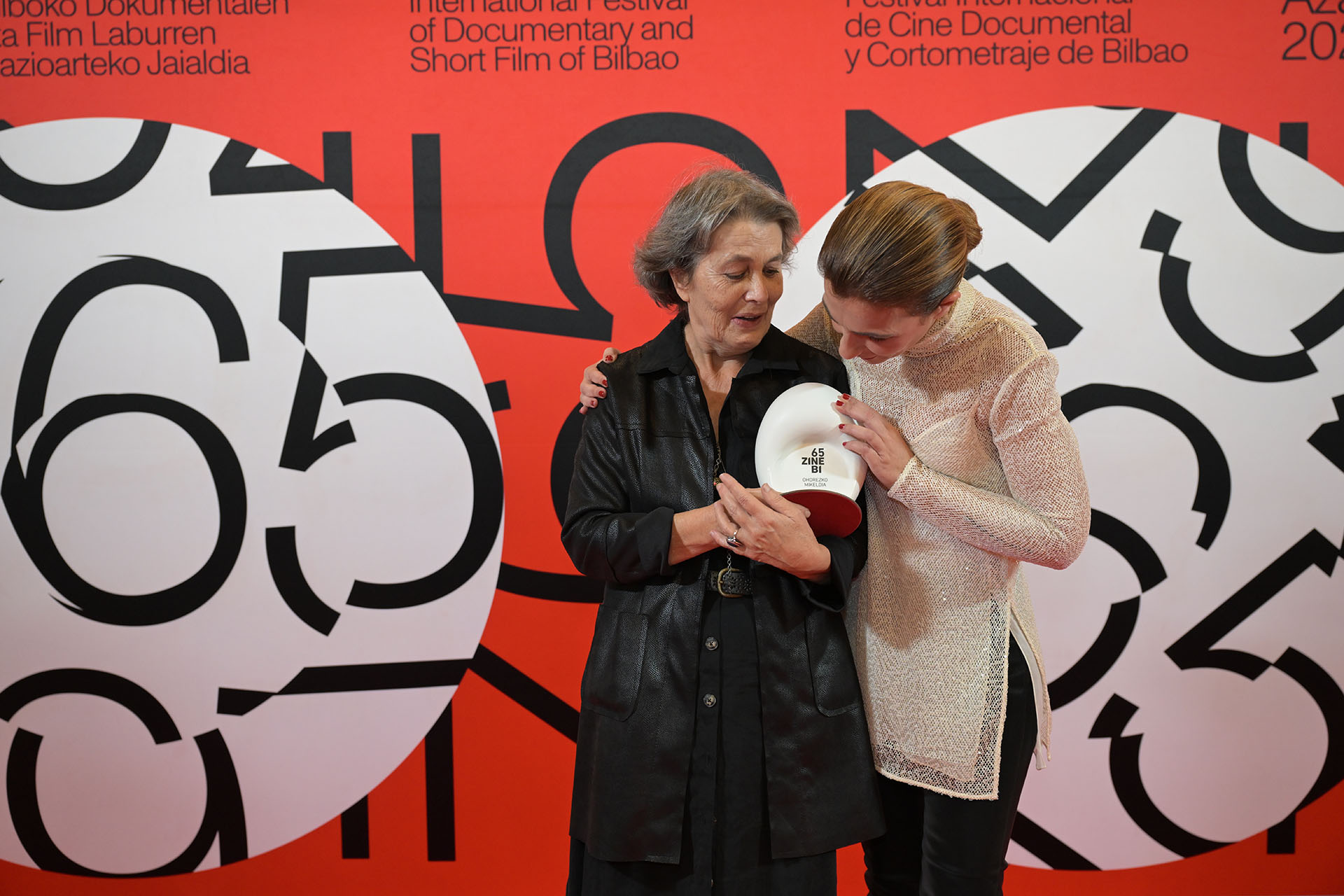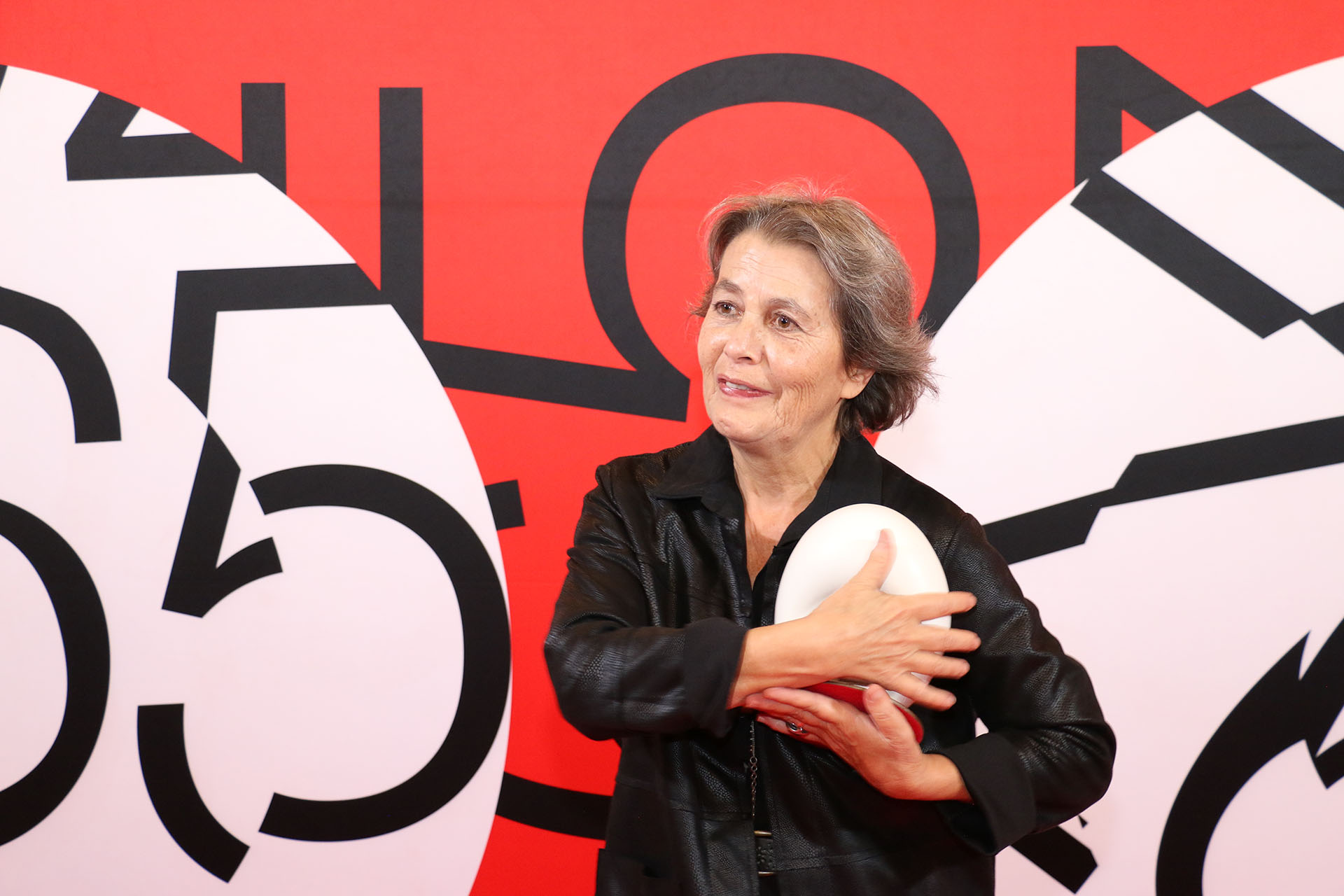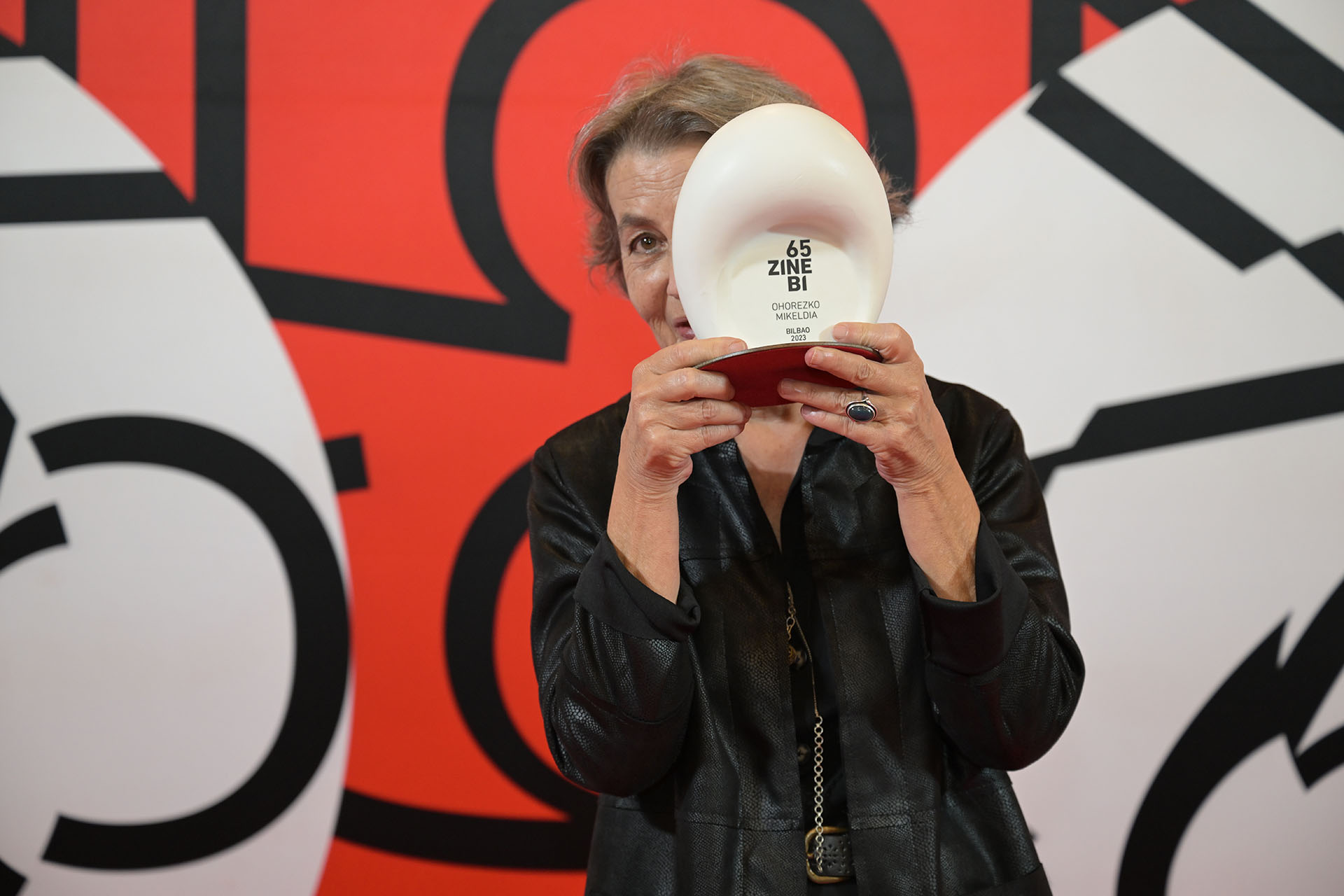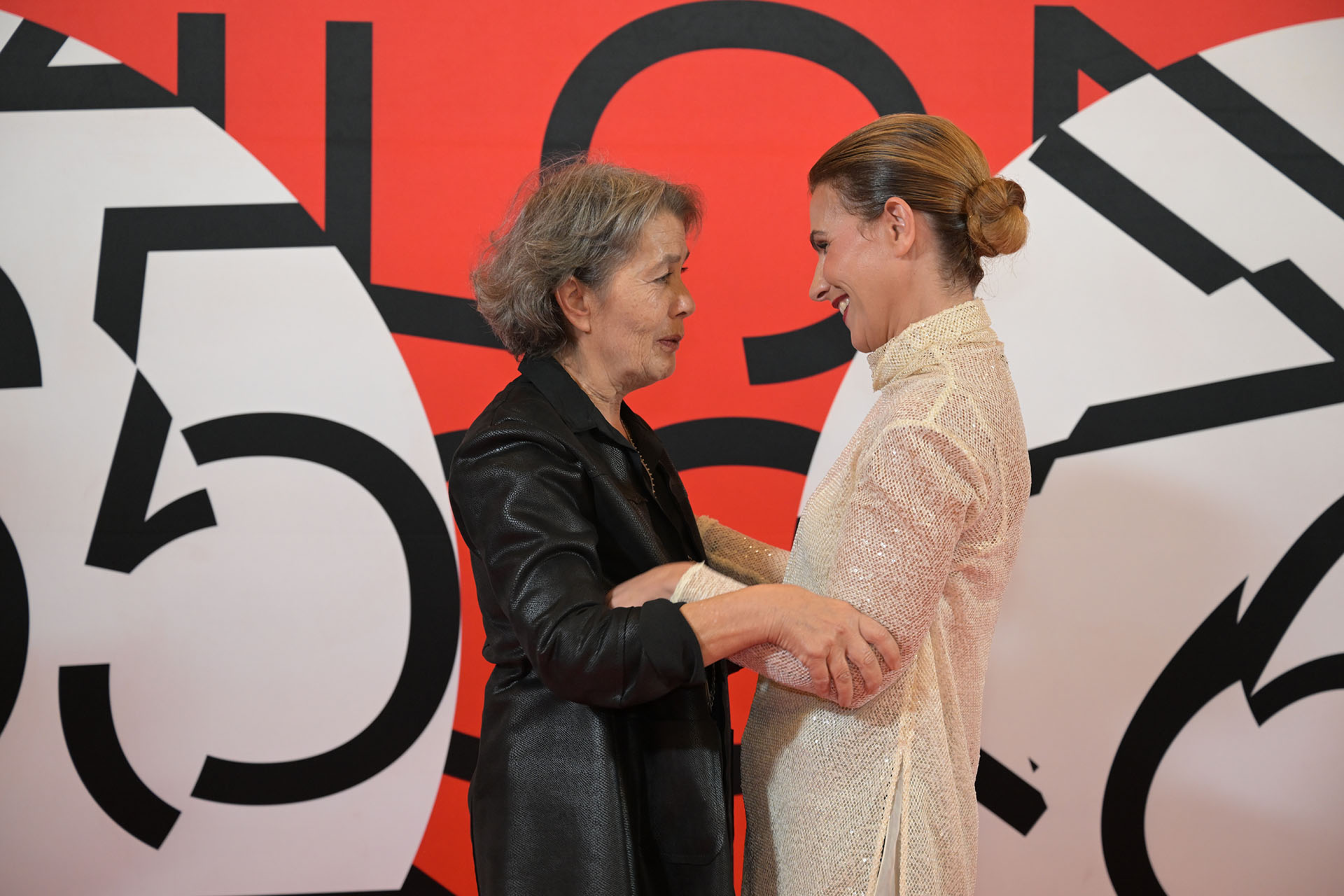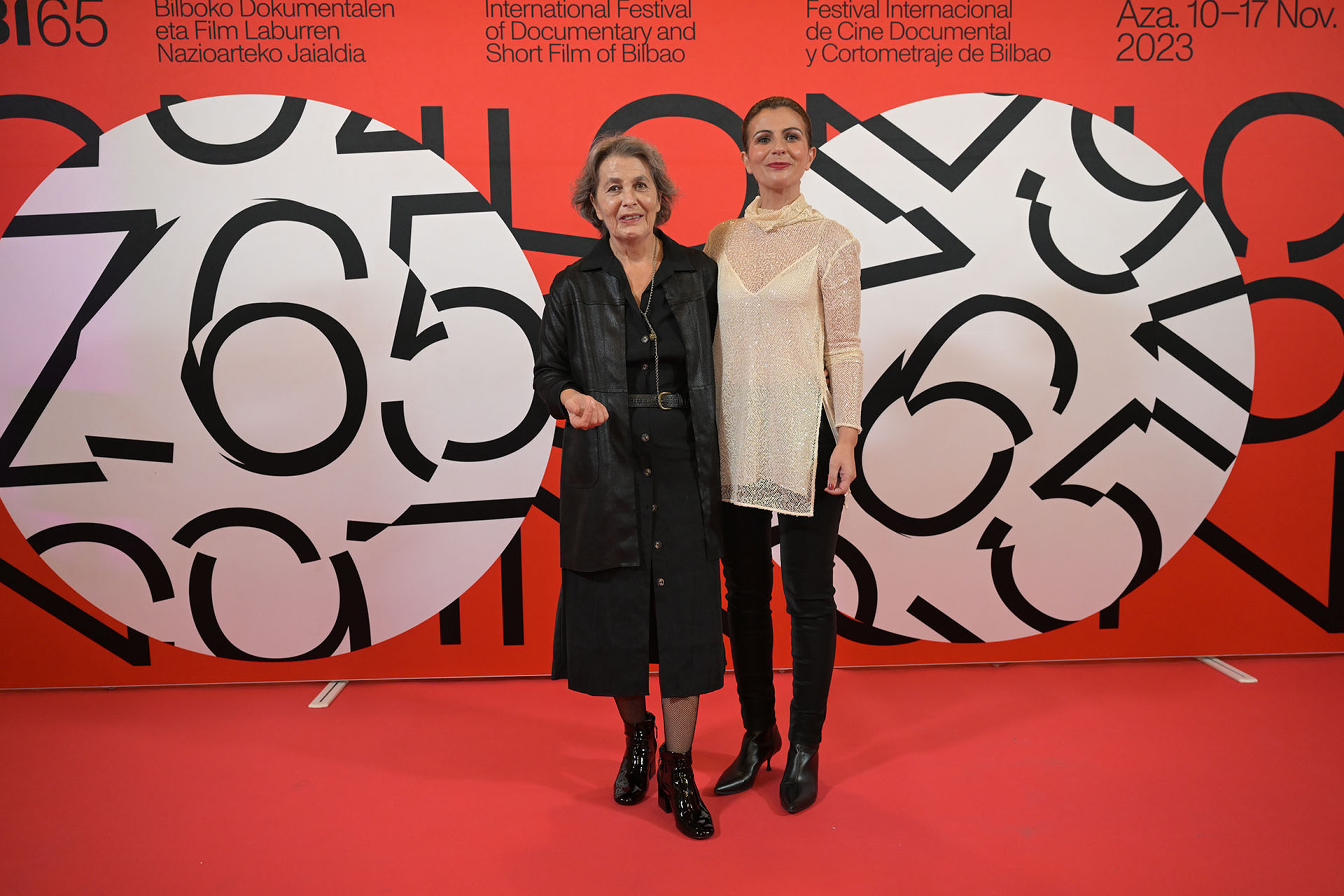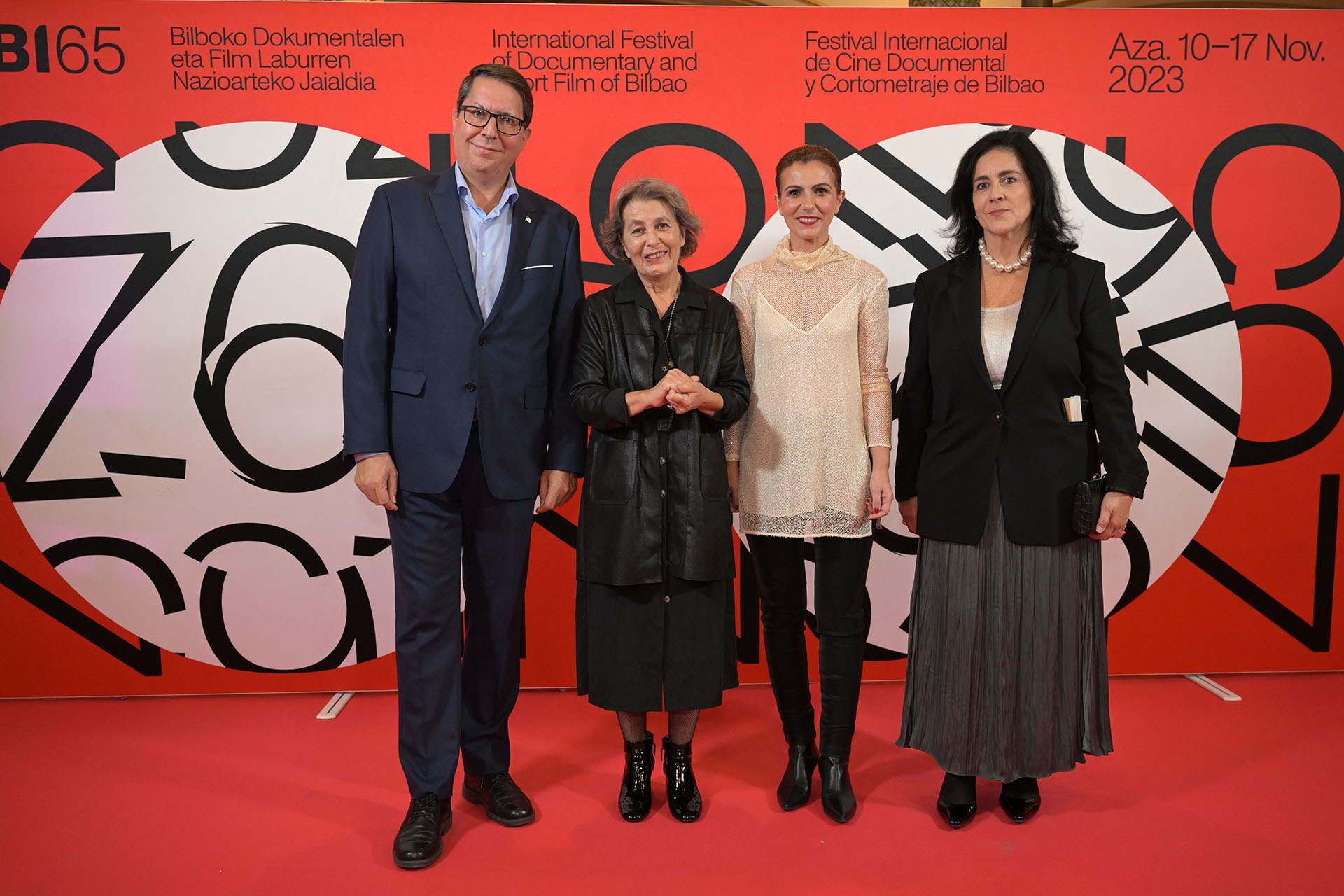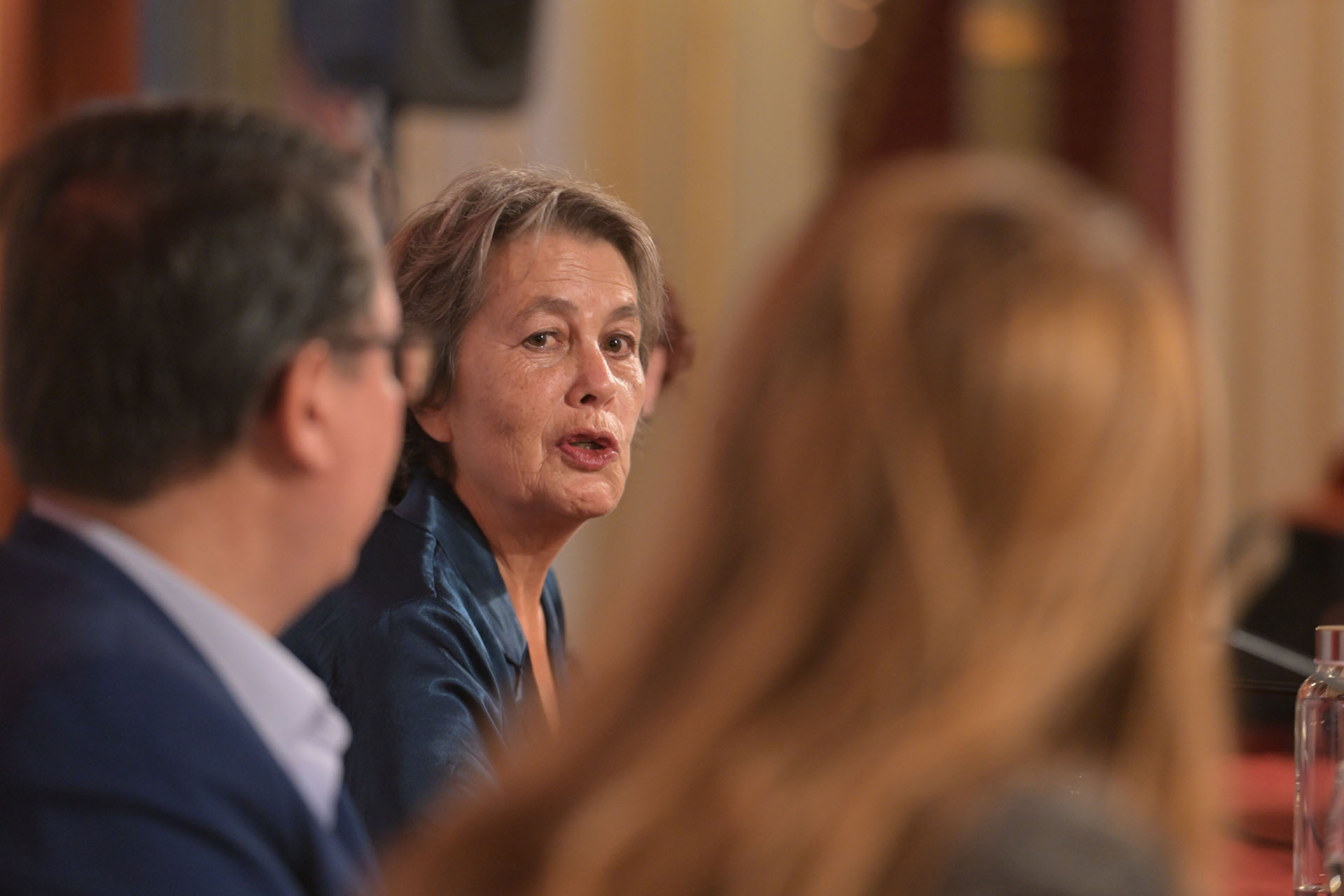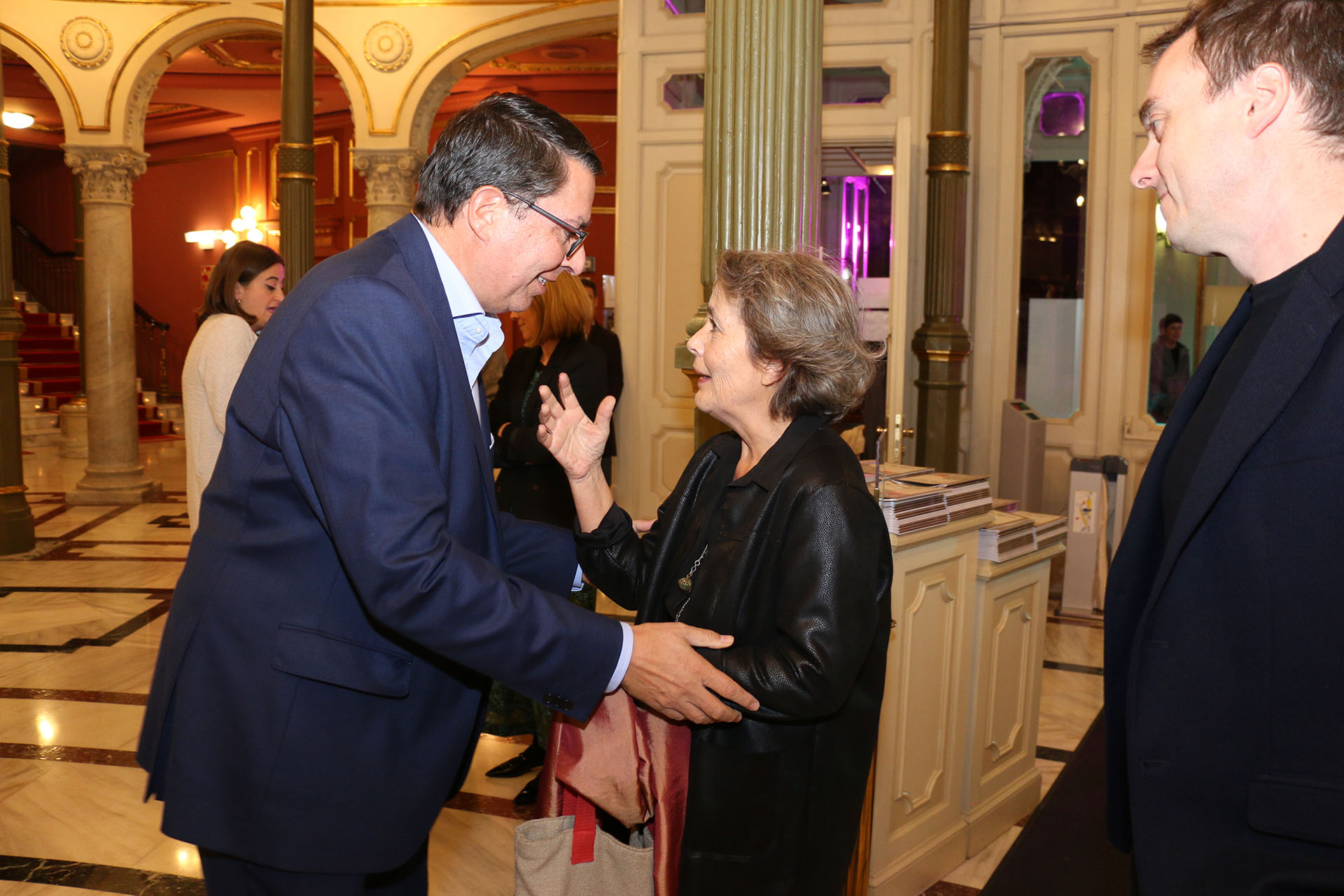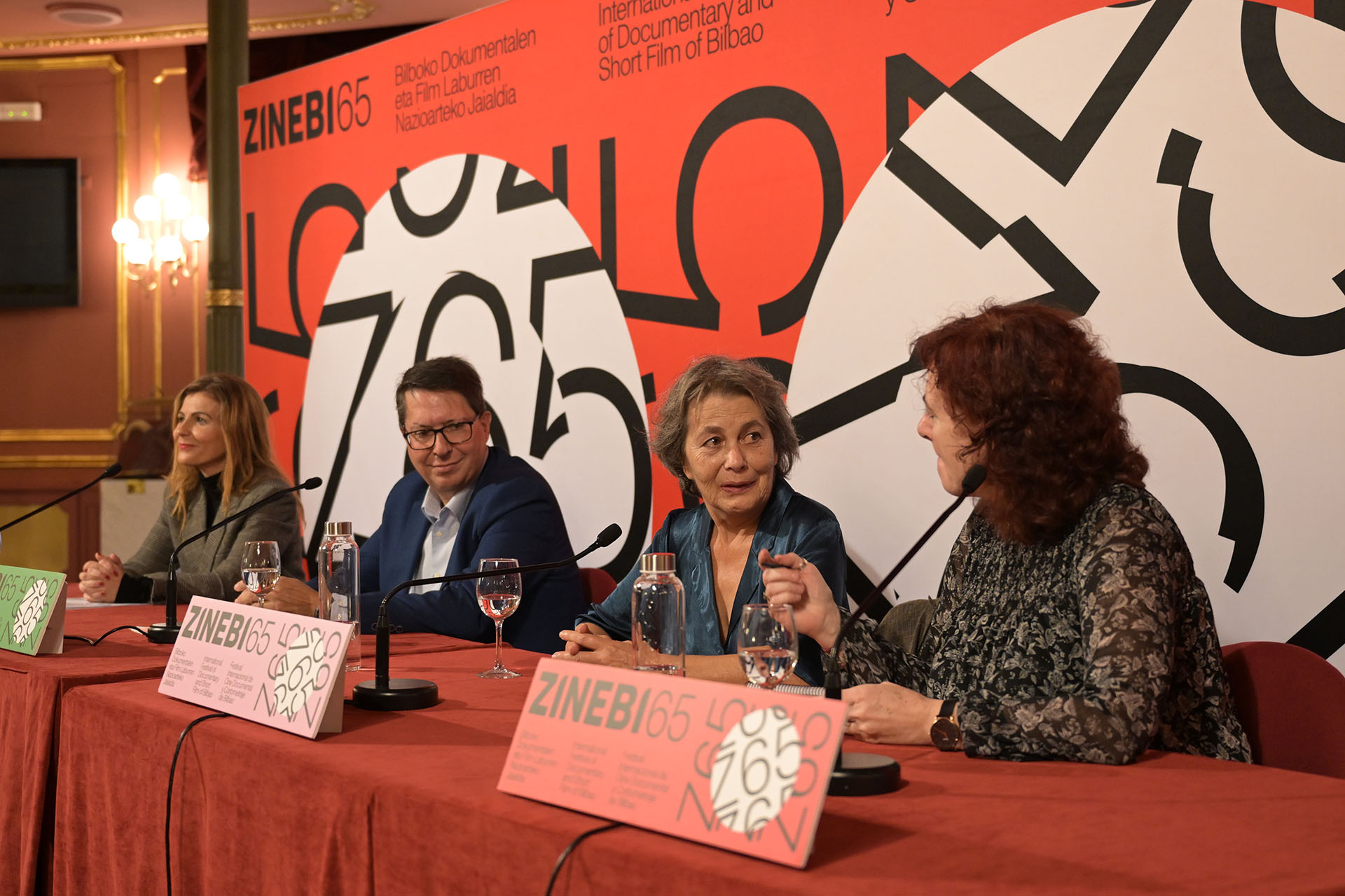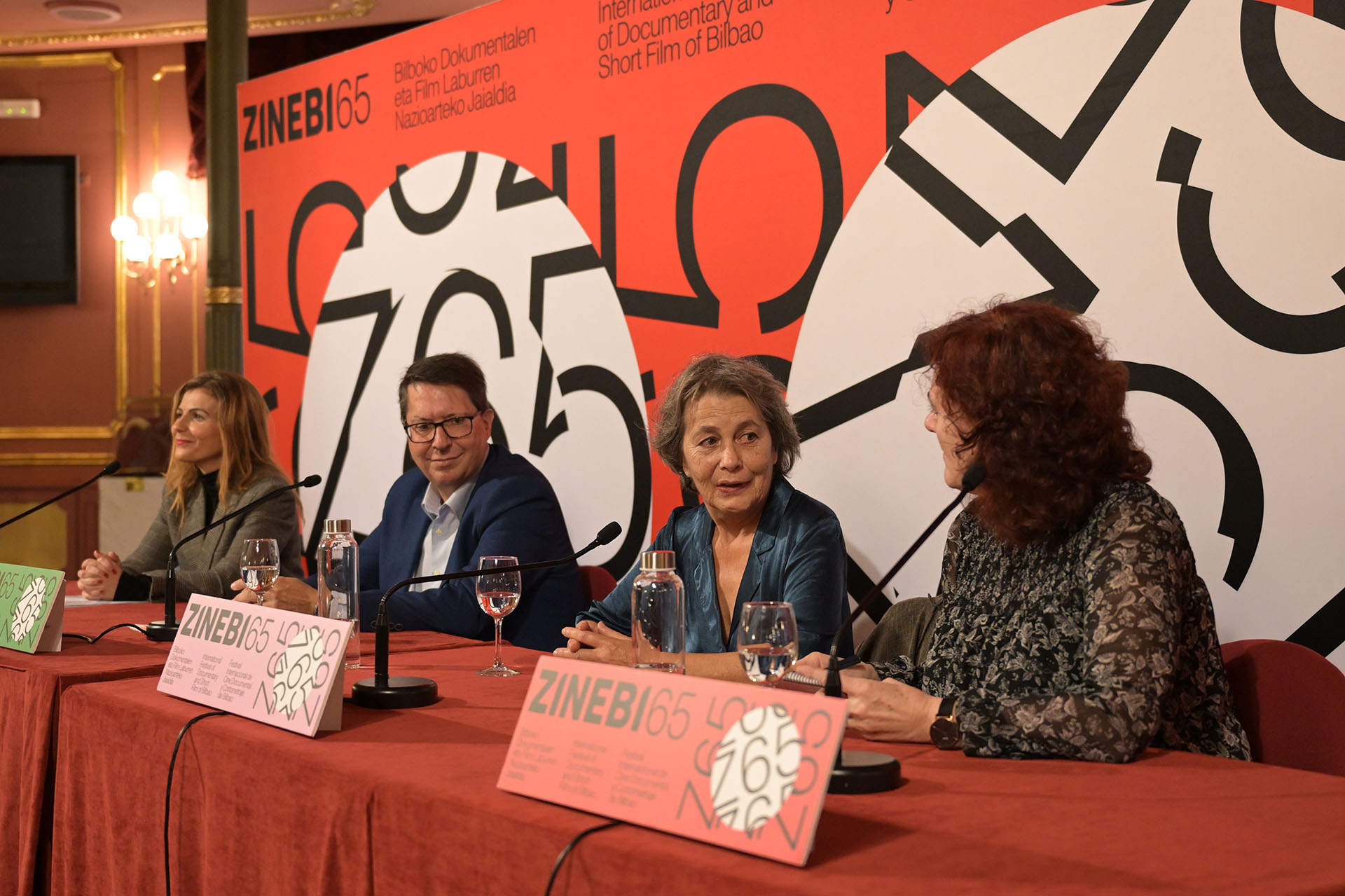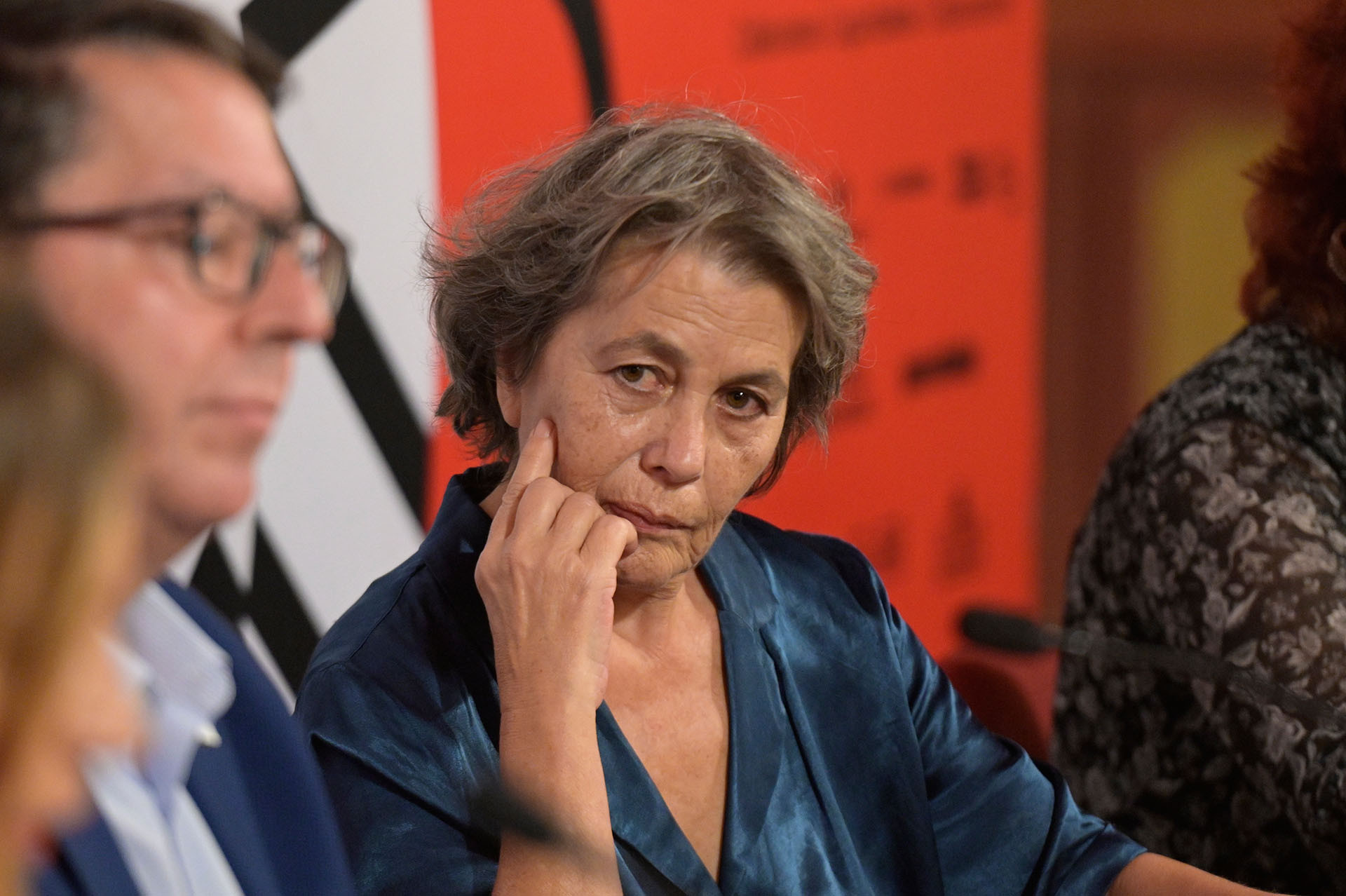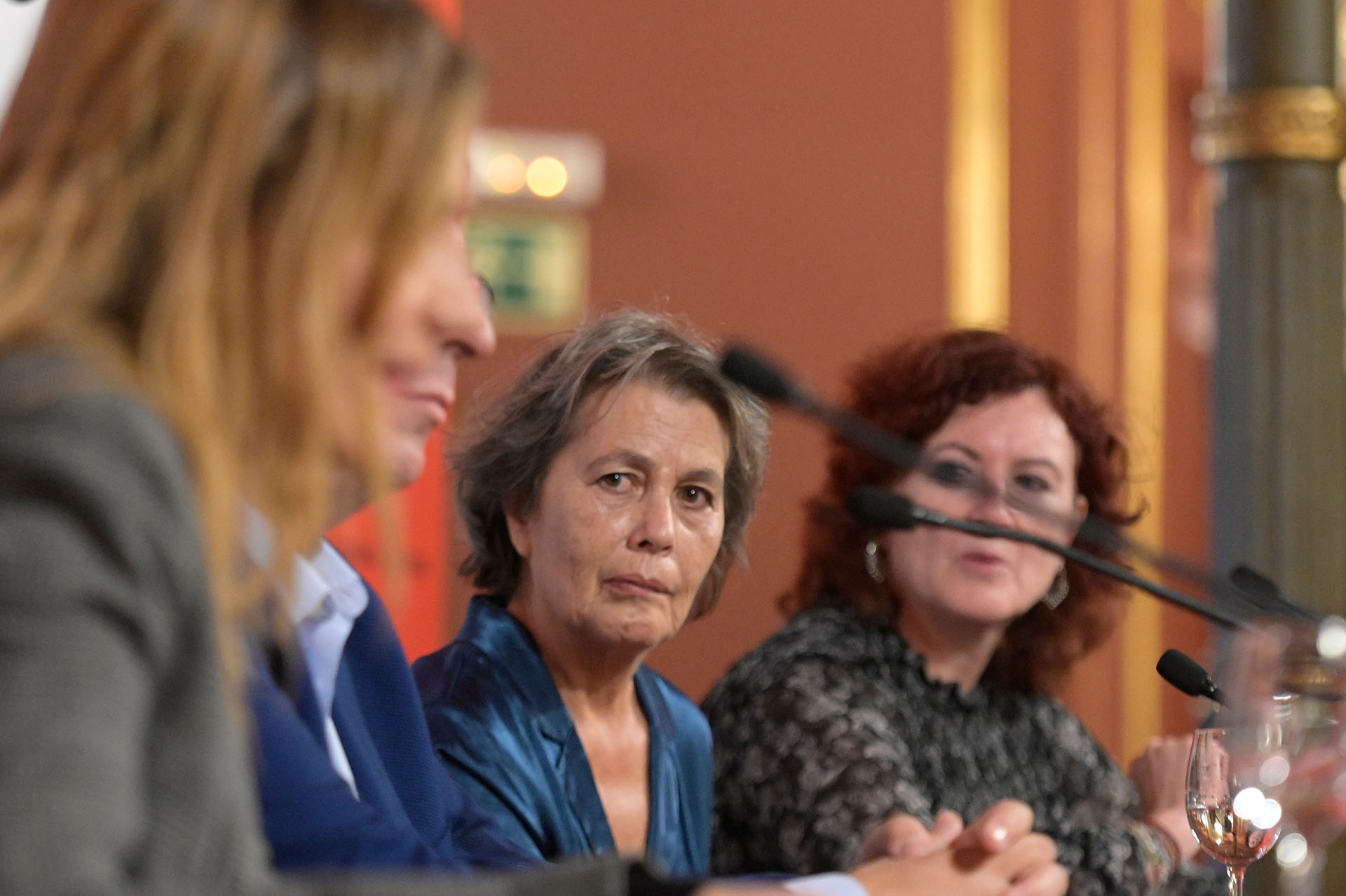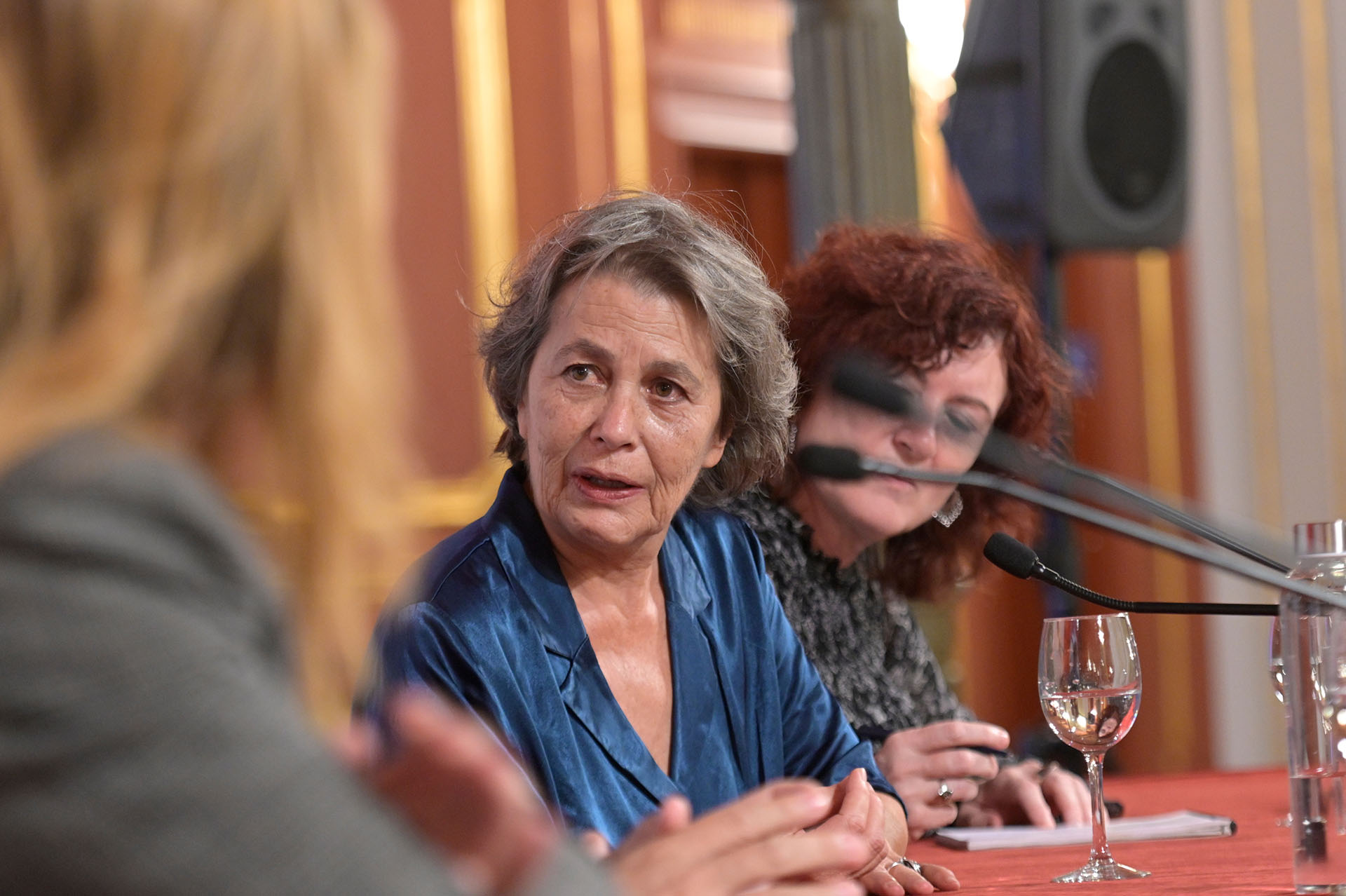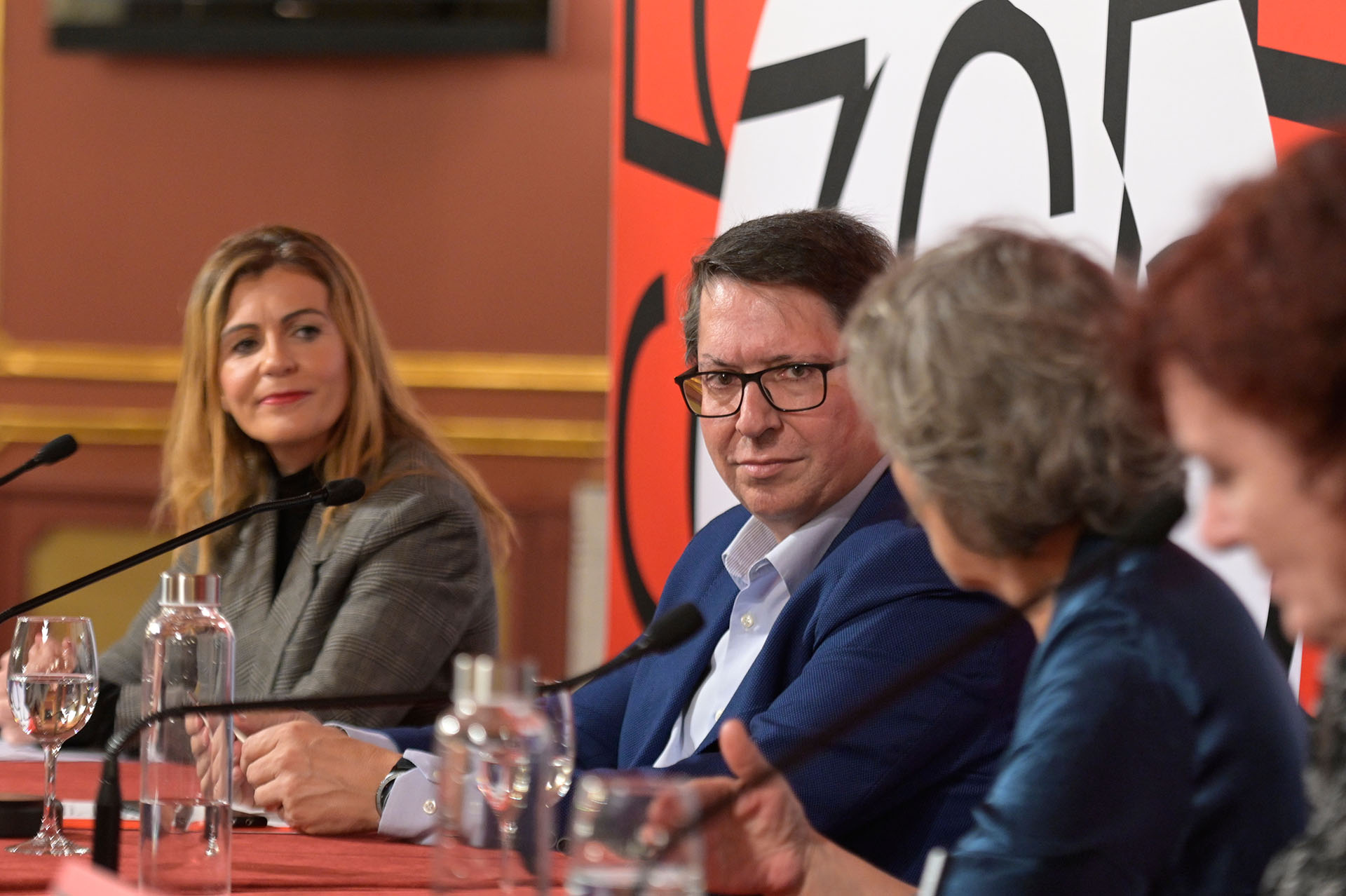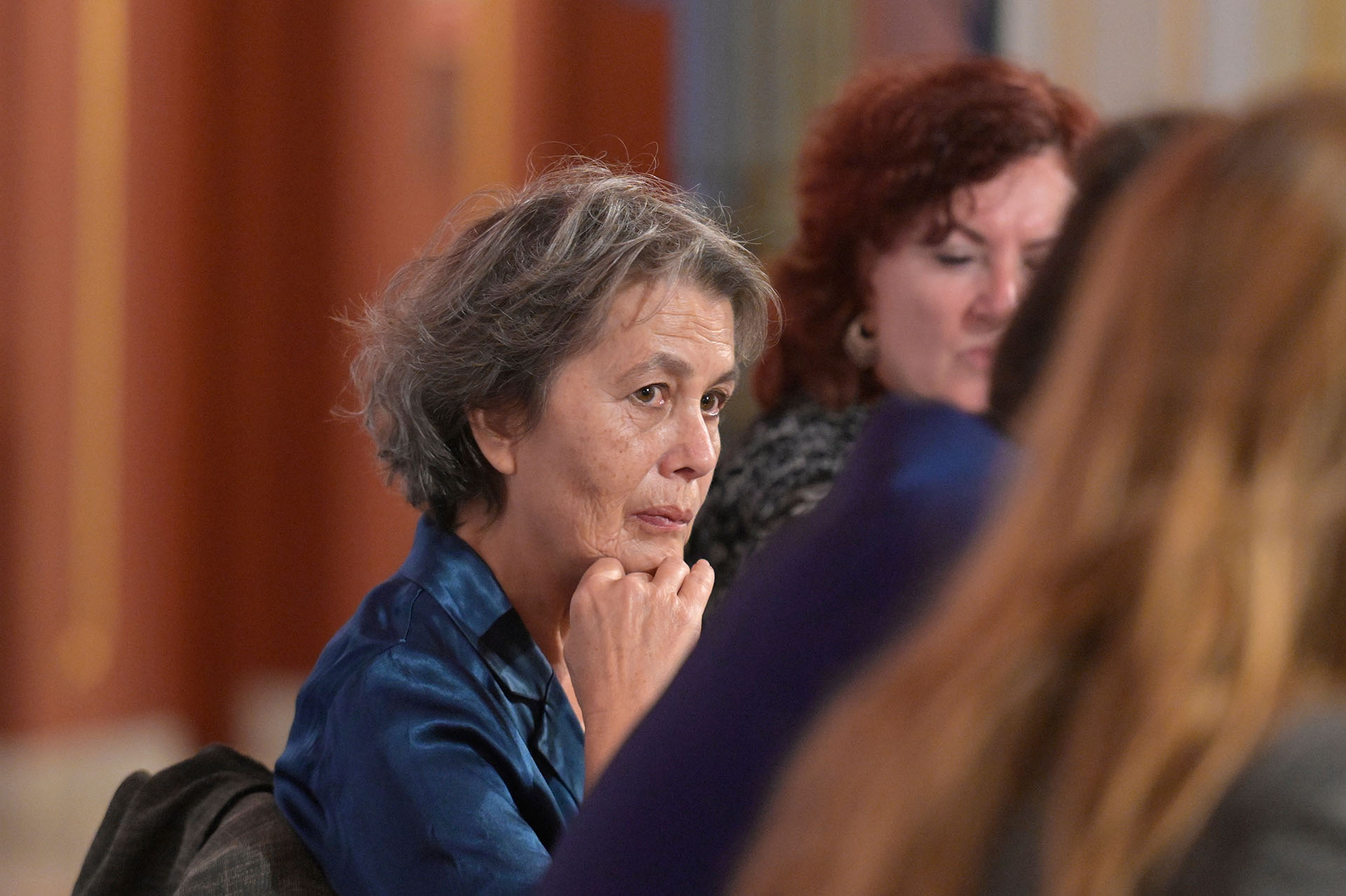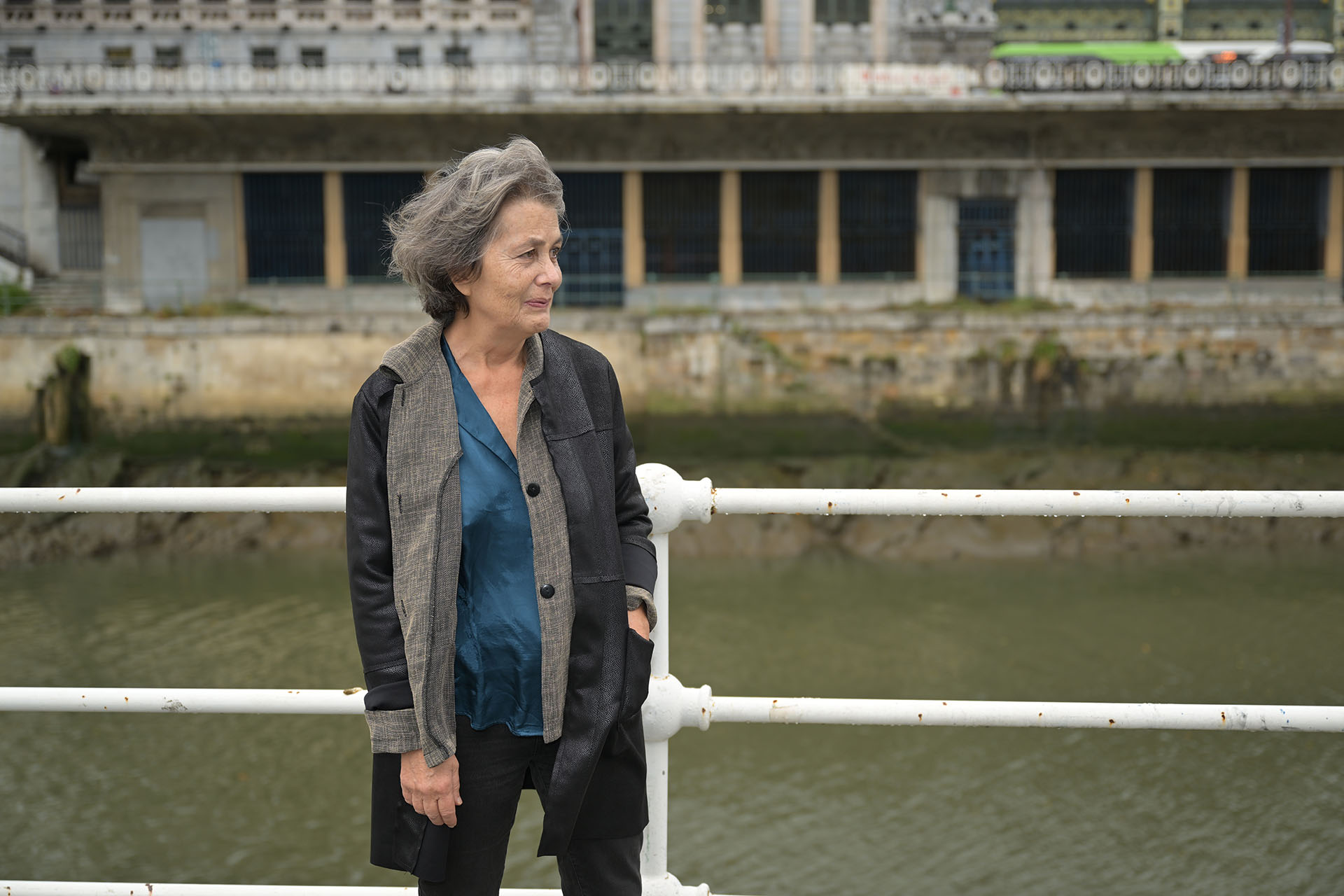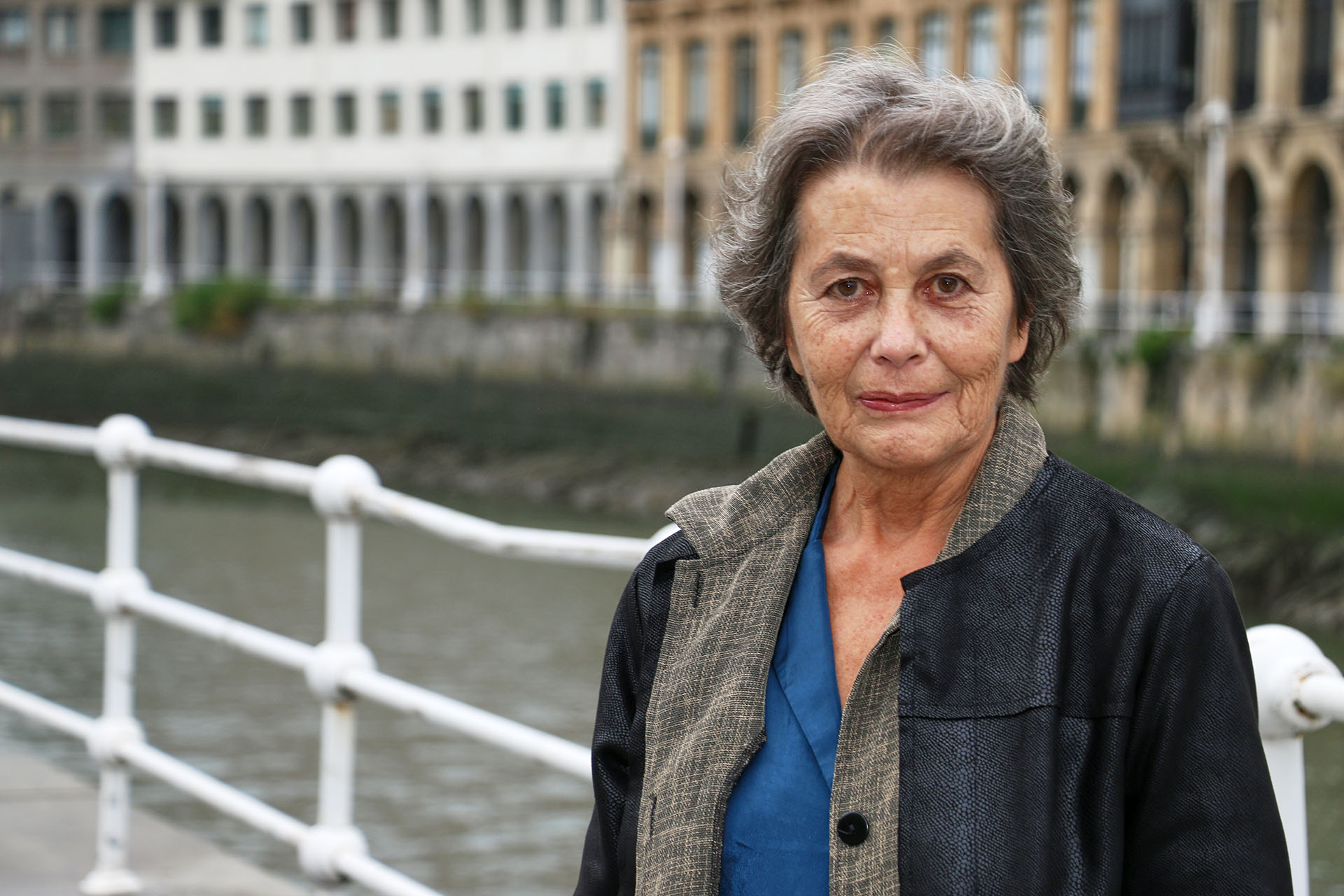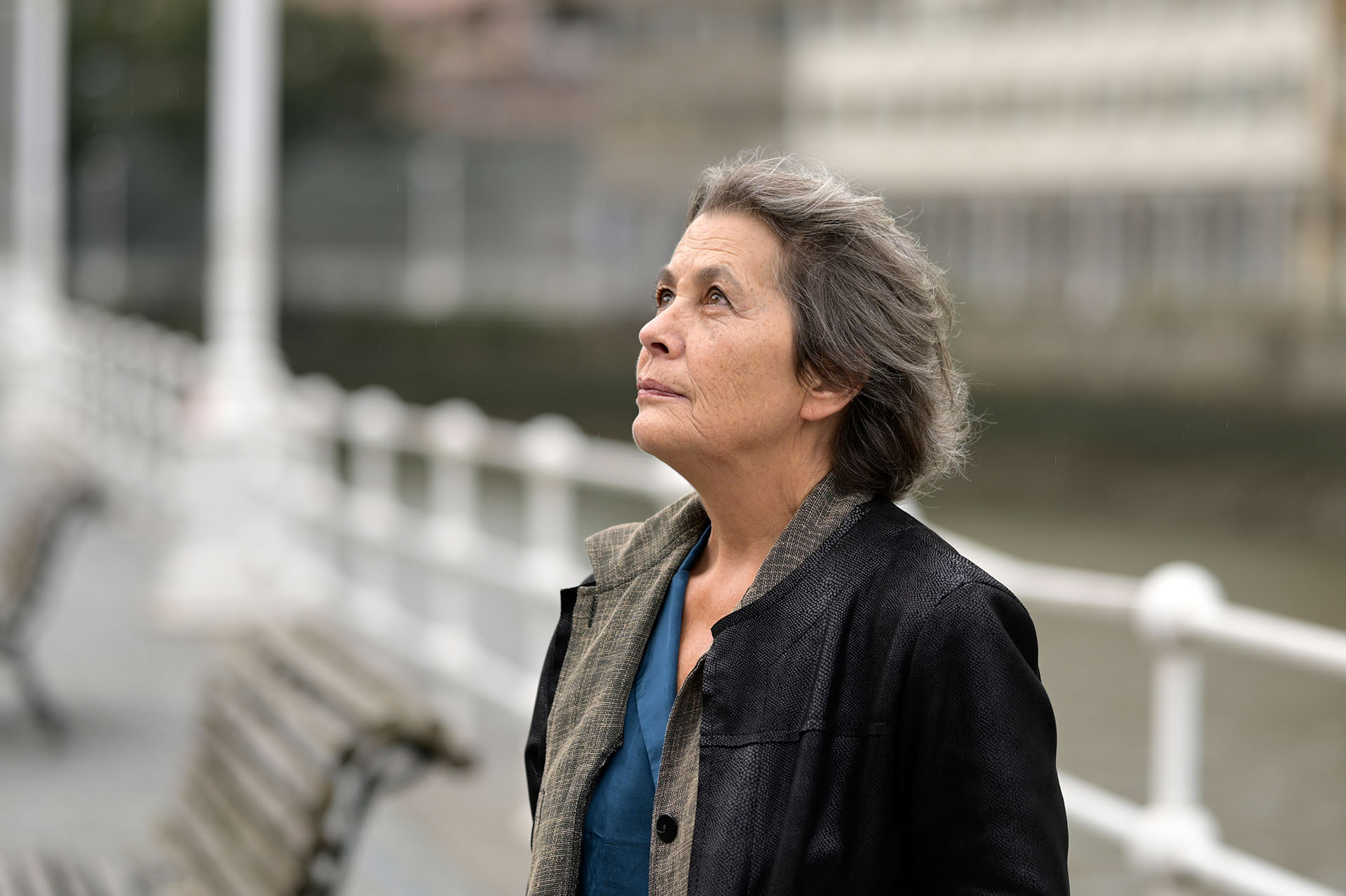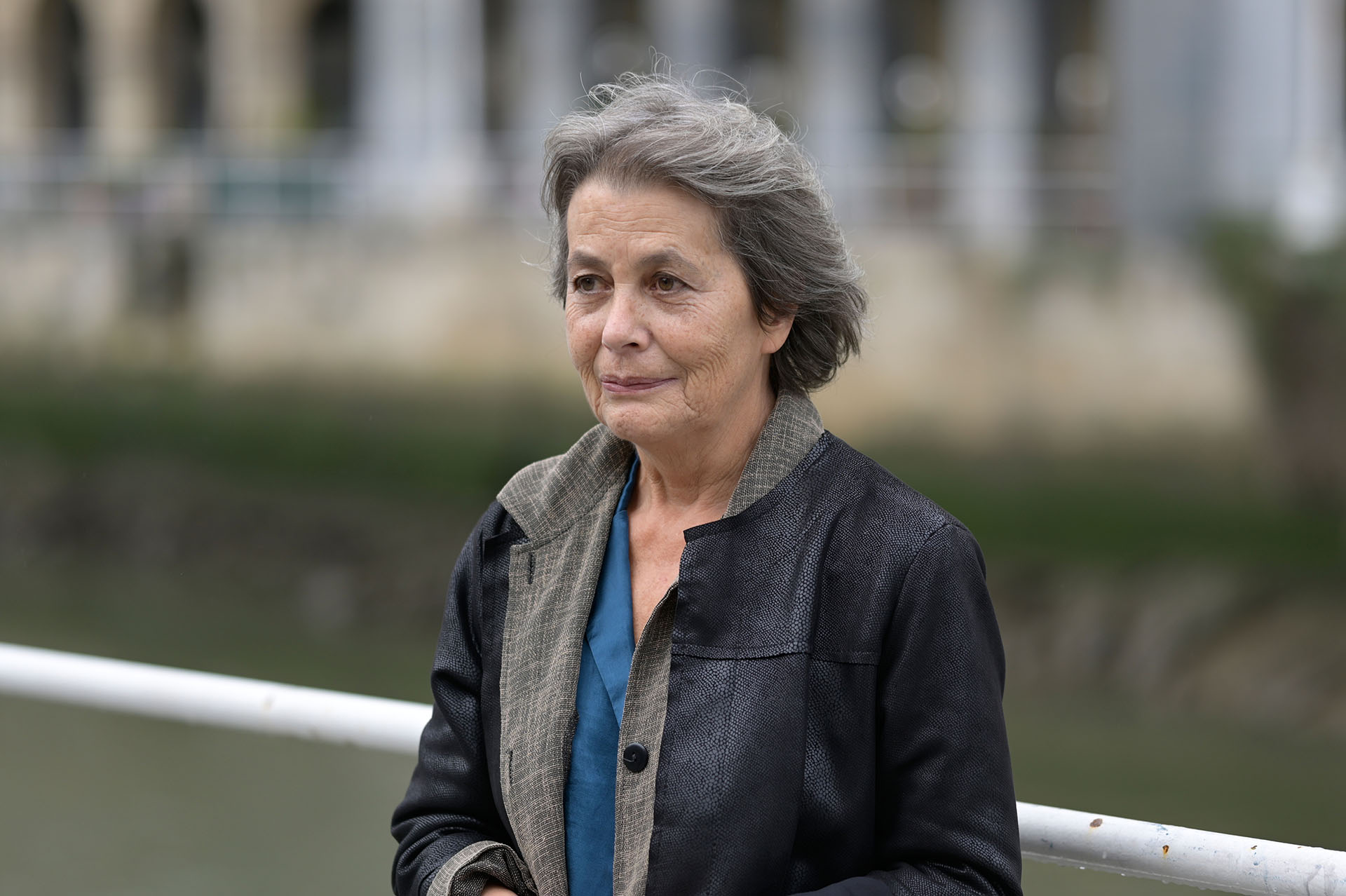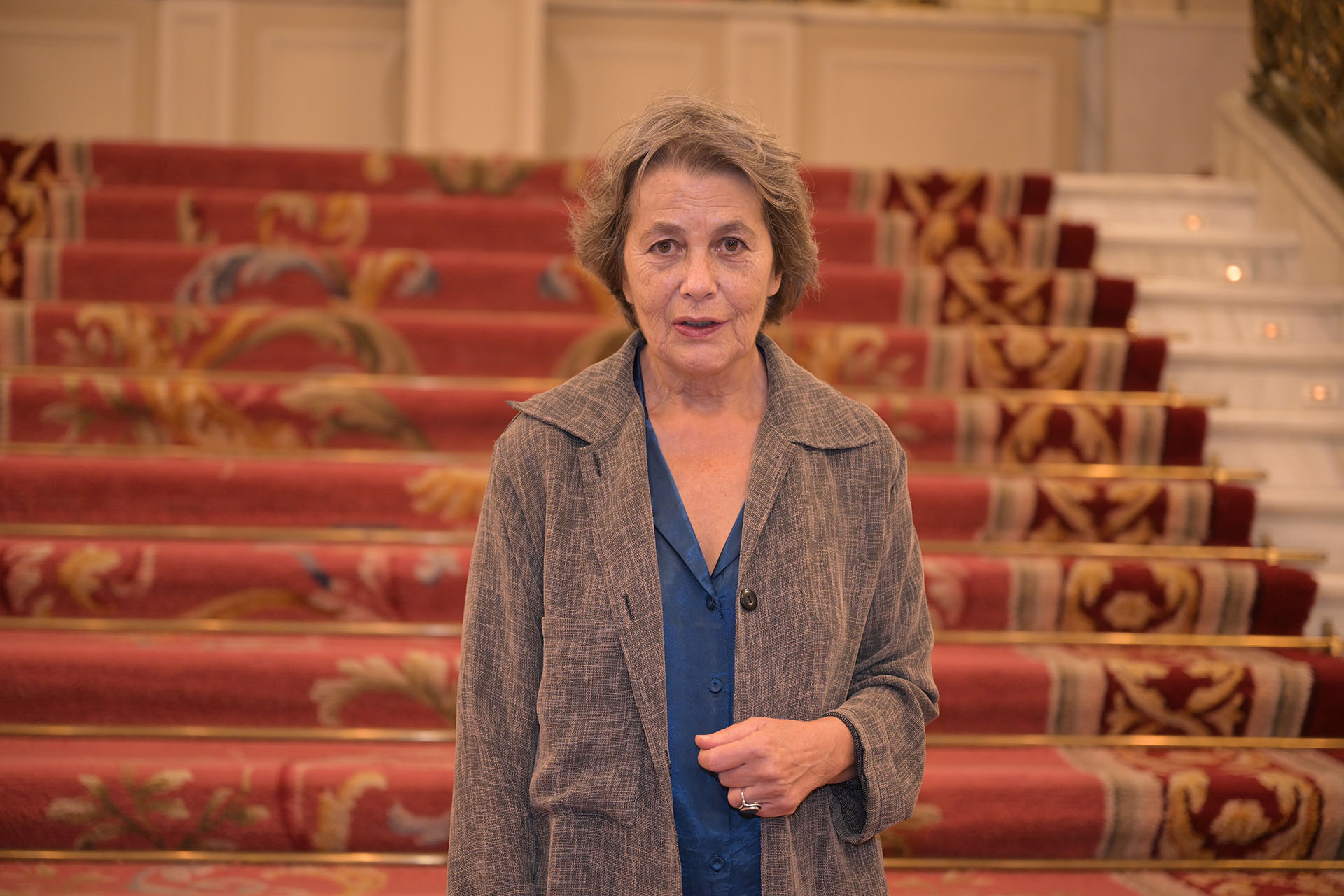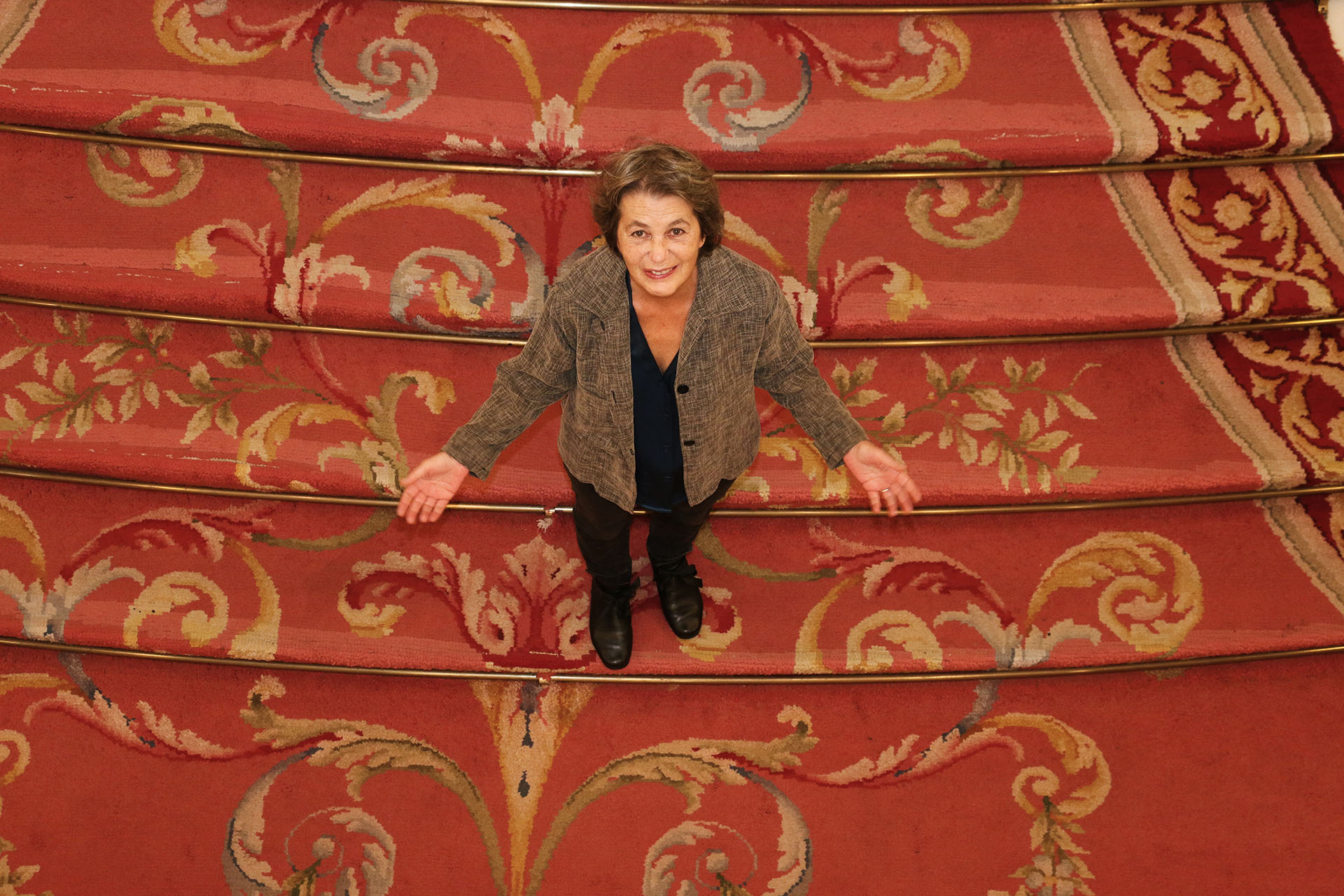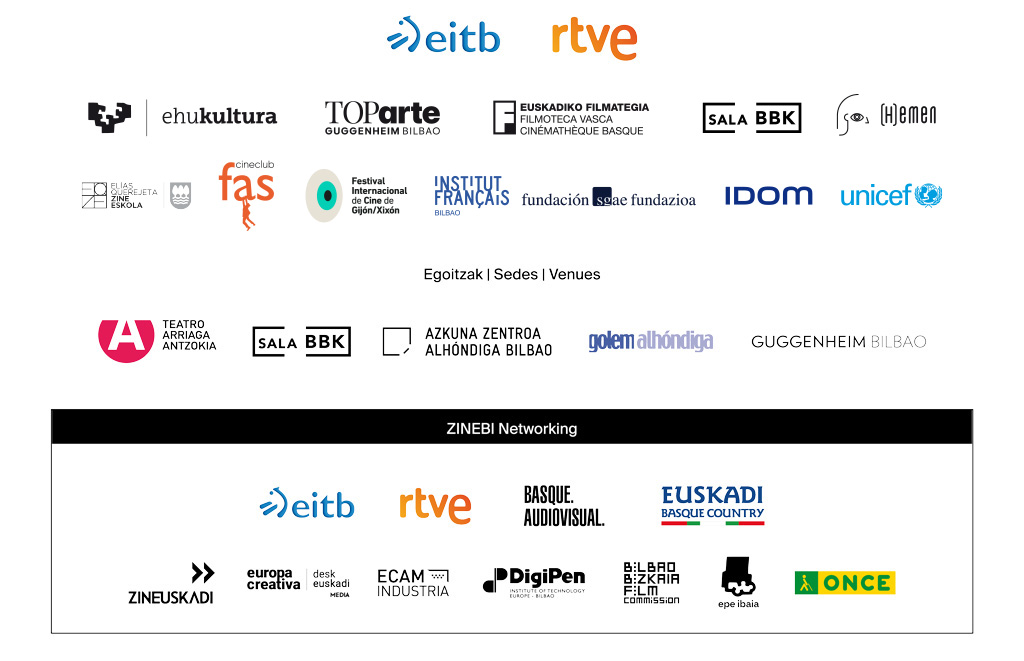Alkimista jakin-nahi eta paregabea
A woman of the cinema, a versatile, independent, unique filmmaker, Rita Azevedo Gomes (Lisbon, 1952) is a director, she is a programmer, she is an artist, and her films render poetry tangible in more than one sense. She is an explorer of the territories of cinema, where the classic and the modern converge, and reality amalgamates with fiction and reformulates their ties, breaking conventions. She is without a doubt one of those who make up our cinematographic universe.
Rita Azevedo Gomes is familiar with the essence of literature, of painting, of theatre, of cinema. She is a curious, extraordinary alchemist, who turns everything into cinema. In her films she has frequently worked with adaptations of literary oeuvres, transforming the texts into images and time; under her restless gaze each word becomes infinite and ramifies, but she finds the precise indication, a different tag mark in this tradition.
This may be perceived in her first work, O som da terra a tremer (1990), based on texts by André Gide, Mário de Sá-Carneiro, Leonardo Da Vinci and Agustina Bessa-Luís – with whom Azevedo Gomes also worked on the short A conquista de Faro (2005) – and, on the specific story by Stefan Zweig, A colecção invisível (2009) and the free adaptation of a story by Robert Musil in A portuguesa (2018), in which she shifts the focus of the tale to a female personage, Correspondências (2016) – screened at the 58th ZINEBI― on decades of a complicit and deep relationship between writer Jorge de Sena and poet Sophia de Mello, ties updated through the voices of Boris Nelepo, Pierre Léon, Eva Truffaut and Agathe Bonitzer.
What is true is that Azevedo Gomes does not simply base her work on an adaptation of the plot, but on the very essence of the poetry of words and theatre, with a rigorous distinguished mise en scène influenced by her previous experience in the scenic and operatic arts, even daring to undertake the free adaptation of a story by Jules Amédée Barbey d’Aurevilly in A vingança de Uma Mulher (2012) or the exceptional theatre text by Éric Rohmer in O trio em mi bemol (2022), starring Rita Durão, Pierre Léon and Ado Arrieta.
15ª Pedra (2007), a documentary which arose from her proximity to João Bénard da Costa (with whom she worked at the Gulbenkian Foundation and Cinemateca Portuguesa) and to filmmaker Manoel de Oliveira (of whom she had been a disciple and former assistant), makes the remark that the power of an image does not stem from what it shows but from what it means, a meaning that is not strictly visible and can only be found by going directly into the work itself. The image, painting as another of her sources of inspiration is evidenced in Danses macabres, squelettes et autres fantaisies (2019), co-directed with filmmaker Pierre Léon and philosopher Jean-Louis Schefer, with the playful apparition of dancing skeletons, mundane delights. “There are images which impregnate you, which go right inside you until, in some way or another, at some point, they come out. There are images you associate with a specific moment, a memory or a feeling, which you can then use in your professional life to express what you feel.”
The elegant configuration she uses to represent feelings is a good example of how Rita Azevedo Gomes’ cinema nestles between art and life. At the end of the day, all the components of her films are used to reach a finale: the finding of ways to express life, to express love. Something so intangible that it requires all this, not to seek a precise unique form, but to be in a position to celebrate it in all its romanticism, in all its ambiguity, in all its innocence. This is what she achieves in Altar (2003) and in Frágil como o mundo (2002), one of the most painfully beautiful cinema love stories ever filmed. Tales of intimacy, sometimes more remote, others more recent, but where reflections on a today are always resonating.
Cecilia Barrionuevo
Programmer at Large / Film at Lincoln Center
International Seminars and Relations / ECAM

